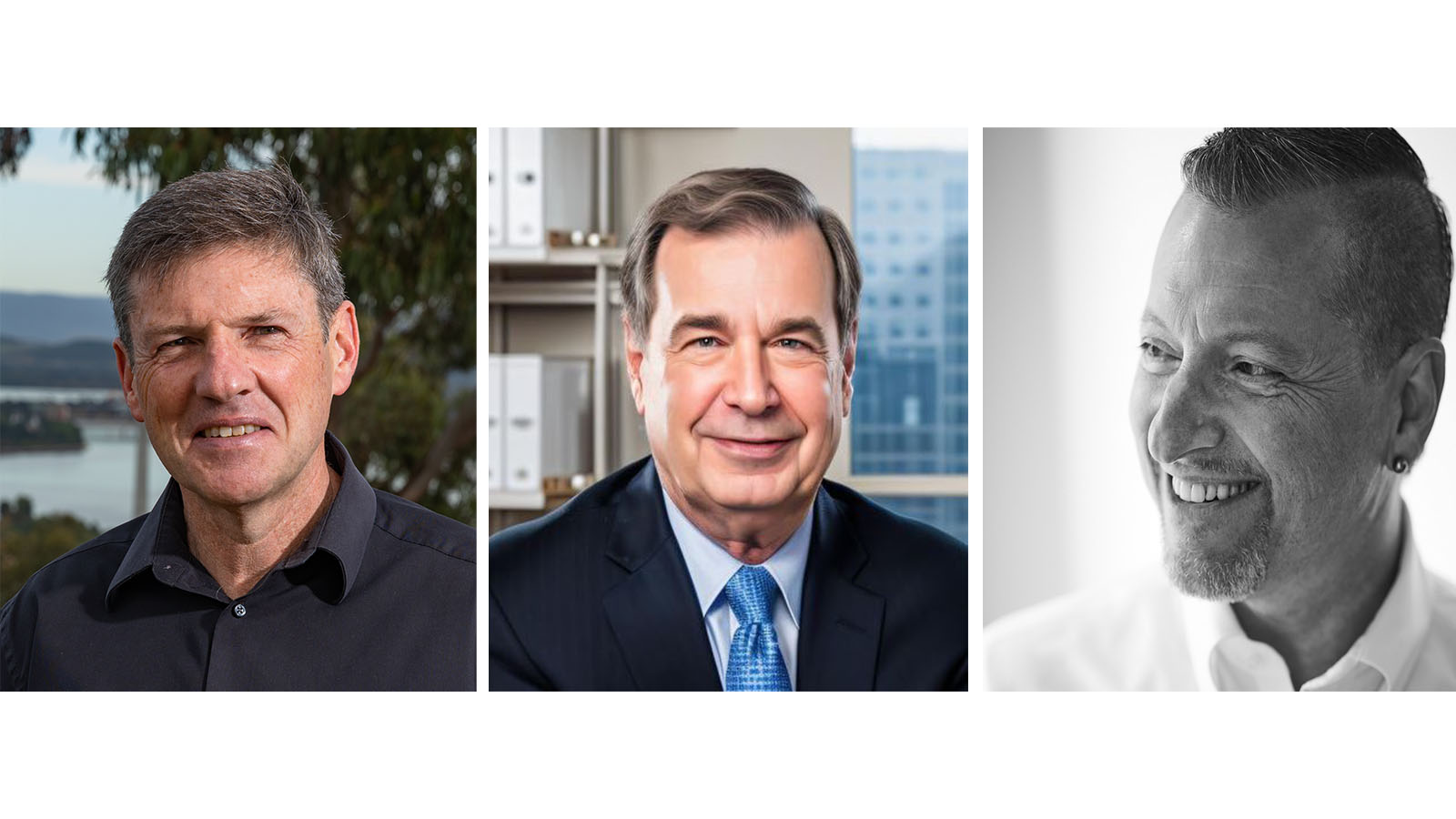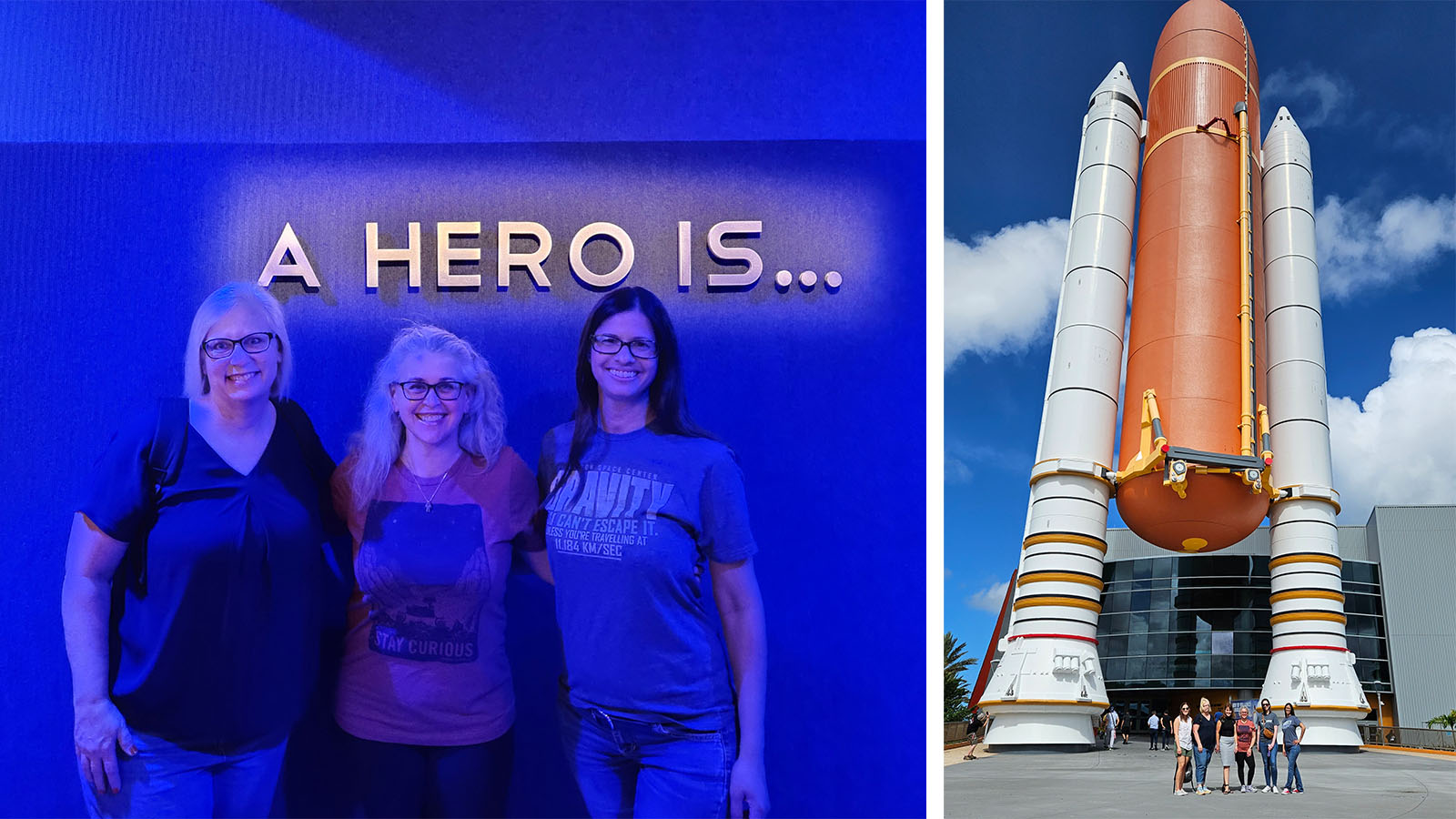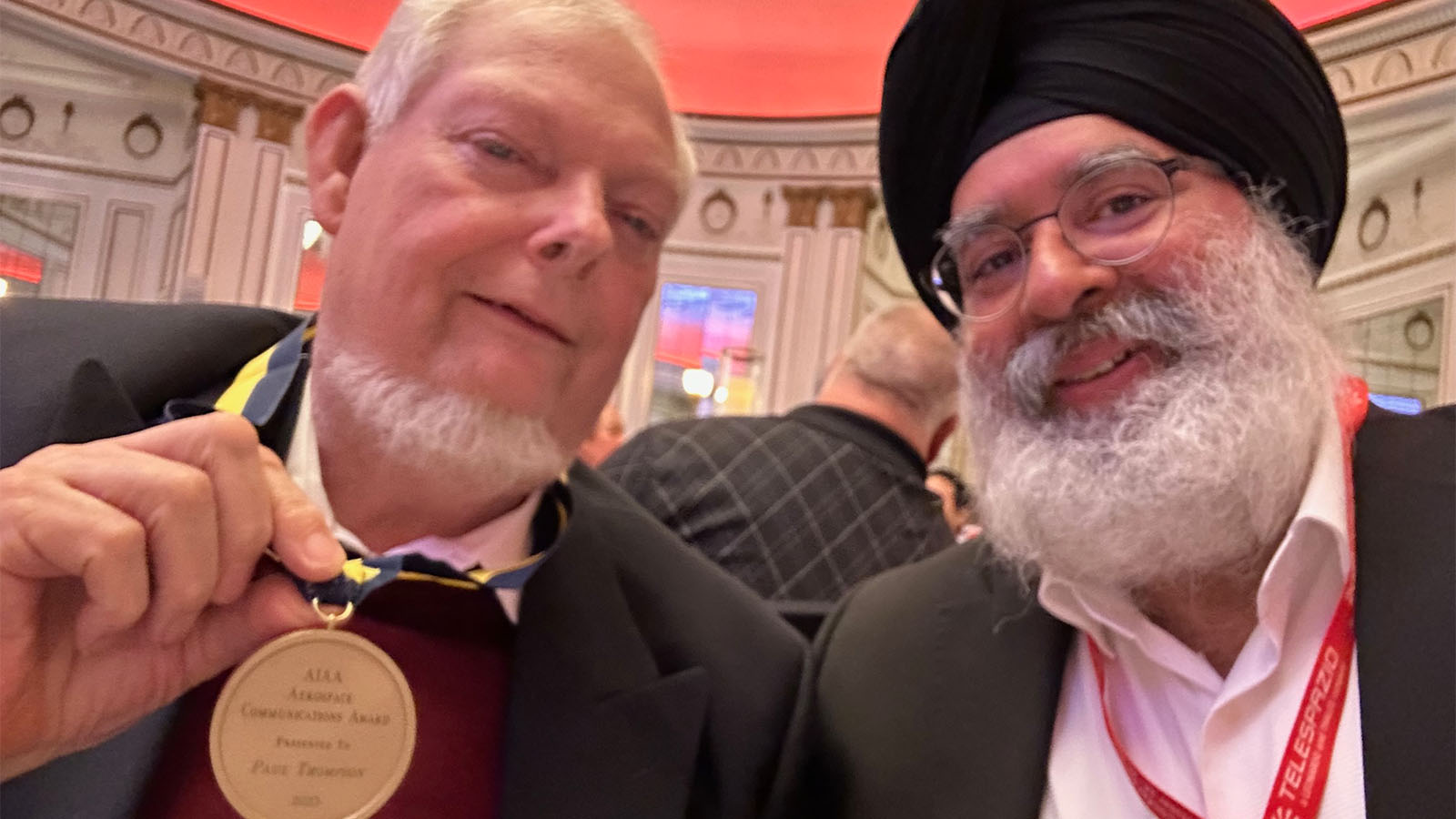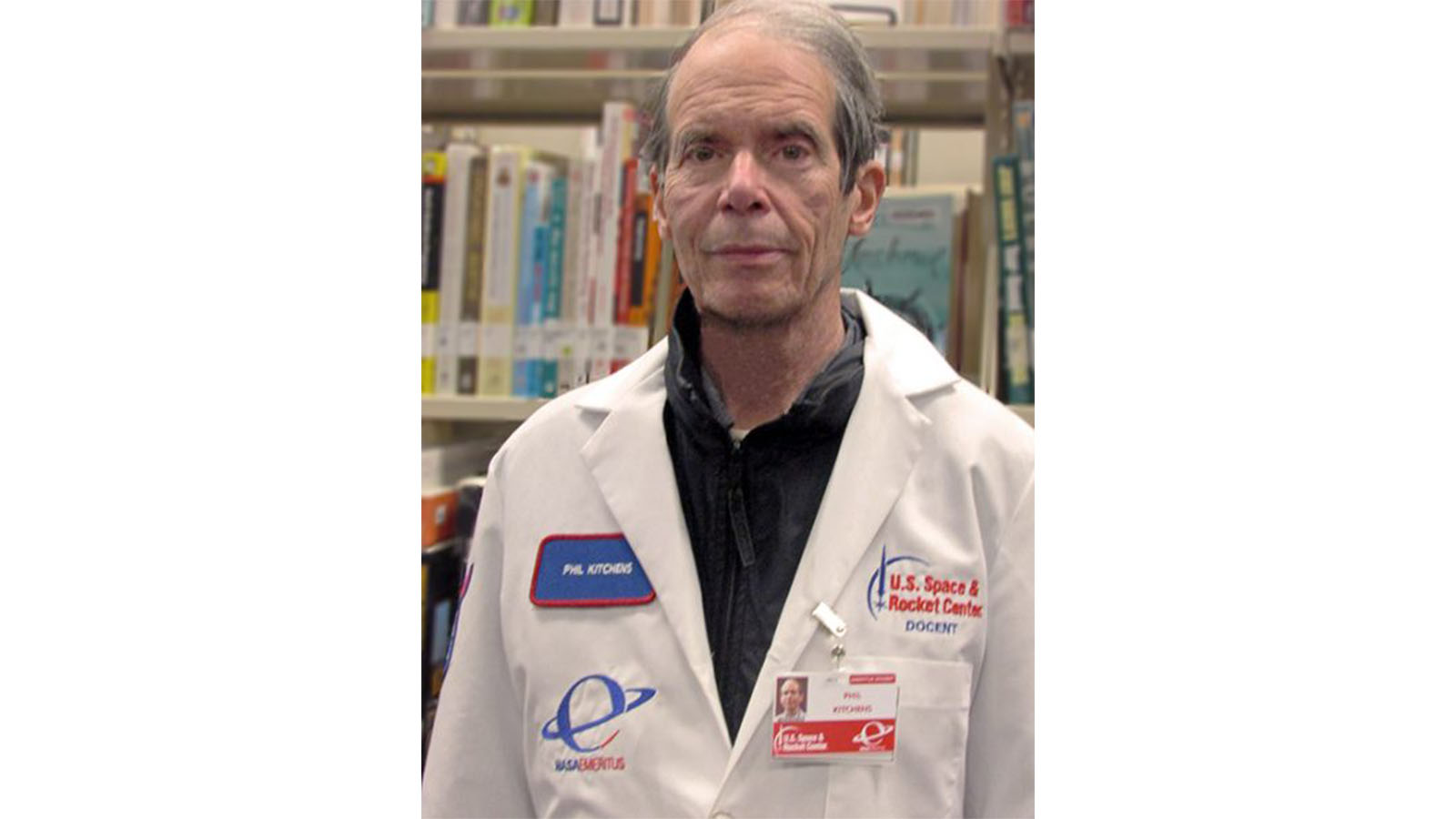Stay Up to Date
Submit your email address to receive the latest industry and Aerospace America news.

AIAA Is Pleased to Introduce the New AIAA Domain Leads
In October 2021, AIAA embarked on a new approach to accelerate innovation in three Domains across the aerospace industry: Aeronautics, Aerospace Research and Development, and Space. We have benefitted from leadership in each Domain by Ming Chang (Aeronautics), Scott Fouse (Aerospace R&D), and Julie Van Kleeck (Space). They have developed roadmaps and guided exploration and new initiatives with multiple AIAA volunteers and the AIAA staff. Their two-year tenure is closing and we now welcome new professionals to build additional momentum and extend the Domain roadmaps even further. It is with great excitement we introduce the new AIAA Domain Leads who are beginning their work in early December.
Aeronautics: Russell R. Boyce, Mission Assurance Pty Ltd (AIAA Fellow)
Boyce previously served as Director of UNSW Canberra Space and was Professor and Chair of Hypersonics at the University of Queensland. Additionally, he has advised the MILO Space Science Institute and Australian Space Agency and chaired the Australian Academy of Science’s National Committee for Space and Radio Science.
Aerospace Research and Development: Greg Zacharias, Pasteur Labs (AIAA Senior Member)
Zacharias previously served as Chief Scientist for the Director of Operational Test and Evaluation, Office of the Secretary of Defense (2018–2021) and Chief Scientist of the United States Air Force (2015–2018). He was cofounder and later president of Charles River Analytics. He also has served on the National Research Council and the USAF Scientific Advisory Board.
Space: Brent Sherwood, Blue Origin (retired) (AIAA Associate Fellow)
Sherwood recently retired from Blue Origin as Senior Vice President, Advanced Development Programs. Before joining Blue Origin, he held various positions at NASA Jet Propulsion Laboratory and The Boeing Company. Sherwood is a former chair of the AIAA Space Architecture Technical Committee.
We sincerely thank and acknowledge the hard work and many contributions of Scott Fouse, Julie Van Kleeck, and the late Ming Chang. As the inaugural group of AIAA Domain Leads, they have been instrumental in bringing this approach from concept to reality by tackling the critical issues confronting aerospace professionals and their organizations as they shape the future of aerospace. Please read more about the progress of each of the three Domains in the Flight Path column.

Making an Impact: Trailblazing STEM Educators Attend Cape Canaveral Experience
In October, some of the 2022 and 2023 Trailblazing STEM Educator Award recipients were invited to attend two launches and receive behind-the-scenes tours at Cape Canaveral. Educators Kellie Taylor (Idaho), Caroline Little (Minnesota), and Aymette “Amy” Medina (Texas) participated in a VIP tour of Blue Origin’s Manufacturing Complex where they got to see up close what goes into building a heavy-lift launch vehicle. On seeing the tools, workspace, and massive pieces of machinery, Ms. Medina noted, “It’s like what my students are doing in the classroom with their rocket, but on a much larger scale.” The group also toured the Kennedy Space Center Visitor Complex where they experienced interactive exhibits and activities that explored the past, present, and future possibilities of space exploration.
A trip to the Florida Space Coast wouldn’t be complete without seeing a launch, and the awardees got to enjoy two — a night launch of a SpaceX Falcon 9 from a rooftop vantage point, as well as a daytime launch of a ULA Atlas V rocket from the Banana Creek viewing area at Kennedy Space Center.
Nominations for the 2024 Trailblazing STEM Educator Award are now open. The award includes $5,000 for the educator, $5,000 for their school or organization, a trip to Washington, DC, to be honored at the AIAA Awards Gala, and access to Challenger Center educational resources. Learn more and nominate an educator by 15 December 2023 at aiaa.org/trailblazing.
The Trailblazing STEM Educator Award is presented by AIAA and Challenger Center. The launch trip was made possible thanks to the support of Blue Origin’s Club for the Future.

SmallSat Event Inspires Educators and Students from Around the World
The second annual SmallSat Education Conference was held 28–29 October at the Center for Space Education at Kennedy Space Center, FL. Three hundred fifty attendees – who came from all over the world – included educators, administrators, and students ranging from middle school up through postgraduate.
While the ages and level of experience varied, all attendees were united in their interest and passion for SmallSats, CubeSats, or high altitude balloons. The conference provided hands-on opportunities (including an outdoor session on intro to soldering) as well as workshops and speakers. A special presentation by Jon Arenberg (Chief Engineer – James Webb Space Telescope, Northrop Grumman) left the entire audience enthralled and motivated to accomplish remarkable feats.
AIAA student branches, sections, and Headquarters were all represented in the exhibit area, along with technical societies from Florida and beyond, STEM clubs and programs, high school robotics teams, and more.
The event was organized and managed by the AIAA Cape Canaveral Section, The Wolfpack CubeSat Development Team, the Aerospace and Innovation Academy, and the AIAA Palm Beach Section. Other sponsors included: Aerojet Rocketdyne Foundation; BLUECUBE Aerospace; the Satellite Educators Association; the IEEE Canaveral Section; Jacobs; Maru Space Technology; Missile, Space, and Range Pioneers; and Florida Tech. For more information, and to learn about future opportunities, visit smallsateducation.org.
AIAA and Club for the Future’s Resilient Student Scholarship Launches
AIAA and Club for the Future have created a new $10,000 scholarship designed to empower and inspire students who have faced unique challenges. Individuals with disabilities, students from underrepresented racial and ethnic groups, gender minorities, individuals from disadvantaged backgrounds, and first-generation students are especially encouraged to apply.
Applicants must be a graduating high school senior enrolling in a STEM program at a U.S. college, university, or technical (e.g., two-year degree) program. Other requirements include AIAA high school membership (membership is free); a minimum GPA of 2.5; demonstrated interest in aerospace through extracurricular activities; and a short personal essay (500 words or fewer). Learn more: aiaa.org/get-involved/k-12-students/scholarships.

Diversity Scholars at 2023 ASCEND
Fourteen Diversity Scholars attended 2023 ASCEND thanks to generous sponsorship from The Boeing Company and the grant received from Blue Origin’s Club for the Future. Of the group, 75% were first-generation college students, and 12 scholars were female or female-identifying. Scholars heard from industry leaders and participated in networking events where they made valuable connections with those leading the future of innovation in the commercial space sector. AIAA Diversity Scholar applications for the co-located 2024 AIAA AVIATION Forum/2024 ASCEND event are open through 2 May 2024. Learn more.
Recognize Aerospace Industry Diversity
In celebration of the great diversity of the aerospace industry, AIAA seeks to recognize its members with outstanding contributions to diversity, inclusion, and the advancement of the field. If you wish to nominate someone for this recognition, or if you wish to self-nominate, please fill out the form.

Award Presented at 2023 ICSSC
Paul Thompson, University of Surrey (retired), was presented with the 2023 AIAA Aerospace Communications Award at the 2023 Joint 40th ICSSC and 28th Ka and Broadband Communications Conference, held 24–27 October in Bradford, United Kingdom. Thompson was recognized for “exceptional service in satellite and space systems design, engineering, and international collaboration.”

Jim French: A Remembrance
by Michael D. Griffin
James R. “Jim” French Jr., a Fellow of both AIAA and the British Interplanetary Society, died on 6 October 2023. He would have been 87 in December.
After receiving his B.S. in Mechanical Engineering from MIT in 1958, Jim worked at what was then the Rocketdyne Division of North American Aviation on the development and testing of the H-1, F-1, and J-2 engines for the Apollo/Saturn launch vehicles, and from 1963 to 1967 at then-TRW on the Apollo Lunar Module descent engine, a record of contribution that includes most of the engines that took people to and from the moon. His memoir, Firing a Rocket, offers a personal reminiscence of those years as well as a treasure trove of hands-on rocket engineering experience that is captured nowhere else.
After joining NASA Jet Propulsion Laboratory in 1967, Jim participated in many pioneering interplanetary robotic space missions, including Mariner 5-9, Viking 1 and 2, and Voyager 1 and 2. He was the Chief Engineer for the SP-100 Space Nuclear Power Program, and led many advanced-mission studies including, most notably, the first credible design study for a Mars Sample Return mission.
Jim left JPL in 1986 for the position of Vice President–Engineering of the American Rocket Company, one of the earliest entrepreneurial space launch vehicle start-ups. From 1987 until his retirement, he was in private practice as a much-sought-after consultant in space systems engineering. Among other prominent roles, he was the government Chief Engineer for the DoD/NASA vertical takeoff, vertical landing, rapid-turnaround launch vehicle prototypes DC-X and DC-XA, and was a long-standing consultant on the development and operation of Blue Origin’s New Shepard suborbital space tourism vehicle.
In addition to his memoir, Jim was the co-author of the best-selling textbook, Space Vehicle Design, and for over twenty years taught an AIAA short course based on that book. His six-decades of service to AIAA included chairmanship of both the Los Angeles Section and the AIAA Space Systems Technical Committee, as well as membership on several other AIAA technical committees. He was a recipient of the Shuttle Flag Award, the 2008 Summerfield Book Award, and was named Engineer of the Year by the AIAA Orange County Section.
Jim was in love with things that flew. He was a member of the California Wing of the Civil Air Patrol and an accomplished commercial pilot, owning and flying a variety of aircraft including a Citabria, a Cessna 205, and a Smith Miniplane. As an airframe and powerplant mechanic, credentials he somehow earned during whatever spare time he had in the Apollo years, he could also fix those airplanes.
On a more personal note, Jim was the person who showed me, and dozens of other young engineers, how to go about being a space systems engineer. He was intolerant of excess bureaucracy, process theater, hypocrisy, self-promotion, unqualified authority figures, and bigotry in any form. He did not suffer fools but was endlessly patient with those who were willing to strive. Our careers were linked across more than four decades; he was at various times my boss, my colleague, a consultant to my organization, my co-author, my teacher, and my student. Above all, he was always my friend. I will miss him until it is my turn to leave.

AIAA Senior Member Kitchens Died in September
Philip H. Kitchens, 78, died on 7 September.
Kitchens earned a degree in chemical engineering from Louisiana Polytechnic Institute in 1967. As graduation approached, Kitchen’s father took him to hear a presentation by Wernher von Braun in Shreveport. Following his graduation, he was hired by Werner von Braun as a member of the team that developed the Saturn V rocket that carried the Apollo 11 astronauts to the moon in July 1969.
Among the missions that Kitchens supported were Apollo 8, Apollo 11, and Apollo 13. Kitchens earned a master’s degree in mechanical engineering from the University of Alabama in Tuscaloosa in May 1971, before returning to NASA Marshall Space Flight Center. He later accepted positions with the EPA in Jackson, Mississippi, and the Ethyl Corporation in Baton Rouge before enrolling at Louisiana State University.
Kitchen went on to earn a master’s in library science in 1976 and accepted a position in the engineering library at the University of Alabama in Tuscaloosa, where he became active in the Special Library Association. In 1981, he returned to Huntsville, working as a librarian at the Redstone Arsenal Technical Library until his retirement in 2003. From 2012 until 2023, he volunteered his time as a NASA Emeritus Docent at the U.S. Space and Rocket Center, educating and inspiring the many guests.
To encourage future scientists and engineers, Kitchens established and funded the Philip H Kitchens Endowment for Science and Technology Resources, as well as establishing a scholarship for the U.S. Space and Rocket Center’s Space Camp. AIAA also acknowledges his generous memorial donation to the AIAA Foundation.
AIAA Senior Member Freeman Died in September
Marsha G. Freeman died on 20 September. She was 76 years old.
Freeman attended Queens College and Columbia University’s Teachers College, where she received a master’s degree in education in 1970. She taught in inner-city Detroit before her interests turned her toward aerospace. She joined the Fusion Energy Foundation and wrote hundreds of articles in Fusion Magazine, 21st Century Science and Technology magazine, and Executive Intelligence Review, where she became the technology editor. She also wrote three books: How We Got to the Moon, the Story of the German Space Pioneers; Challenges of Human Space Exploration, about the scientific work done by Russian cosmonauts and American astronauts on the Russian Mir space station, a predecessor to the ISS; and Krafft Ehricke’s Extraterrestrial Imperative, reviving the work of one of the most creative and imaginative of the German space engineers, who came to the United States after World War II.
Freeman started writing about space when there were hardly any women involved in the genre. When giving tours as an accredited tour guide to school kids at the Air and Space Museum in Washington, DC, she always told the girls that space was gender-neutral. Freeman attended the first Space Shuttle launch in 1981 and interviewed the pilot, Robert Crippen. She also was privileged to attend the ceremony at the White House when Eileen Collins, the first woman to command the Space Shuttle, was presented to President Clinton.
From 1992, Freeman was a very active member of the International Astronautical Federation’s History Committee, writing for them and speaking at their annual congresses and helping edit their annual journals. She was a member of the AIAA History Technical Committee from 2000 to 2005.
AIAA Associate Fellow Back Died in March 2022
Lloyd H. Back died on 21 March 2022. He was 89 years old.
Back served in the U.S. Army from 1951 to 1955. In 1962 after Back completed his Ph.D. in Mechanical Engineering and Fluid Dynamics at UC Berkeley, he worked at the Jet Propulsion Laboratory until his retirement in 1992.
His professional contributions spanned widely varying applications in science including rocket propulsion, heat transfer processes, helicopter rotor, and rocket nozzle design. Back was especially proud of his biomedical research in conjunction with the Cardiology Department at the USC School of Medicine and later work studying details of blood flow in human atherosclerotic coronary arteries and the effects of angioplasty. He received many career accolades and greatly appreciated the large number of collaborative scientists he worked with. Back lectured at Caltech and USC Medical School, taught engineering courses at UCLA, and had 193 peer-reviewed publications in prominent journals.
Stay Up to Date
Submit your email address to receive the latest industry and Aerospace America news.




